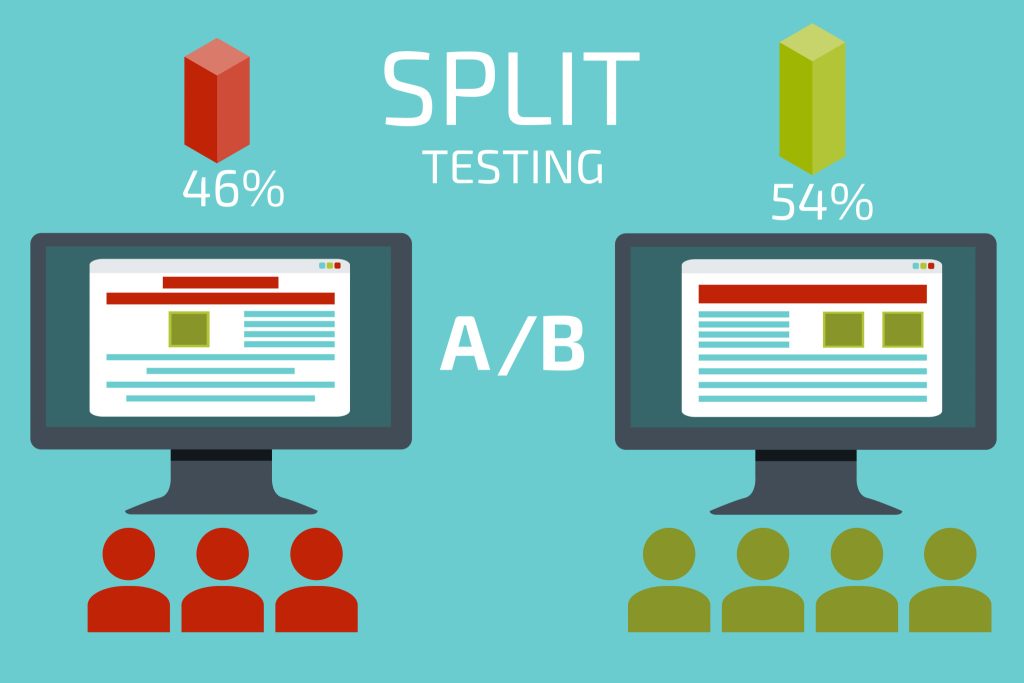Affiliate marketing campaigns require careful planning. It’s challenging to stay up-to-date with competitors, industry trends and knowing what’s working and what isn’t if you don’t have a plan — especially for producing affiliate marketing campaigns.
You need a framework for designing affiliate marketing campaigns, testing, iterating, and generating real results. That is what we intend to do with this blog post – help you build an affiliate marketing strategy for your next campaign. So let’s dive right in!
What exactly is an affiliate marketing campaign?
A campaign is a plan that employs numerous marketing strategies — such as advertising, influencer marketing, SEO, and others — to achieve a certain business goal (sale, lead generation, brand awareness, etc.).
Knowing how to plan affiliate campaigns properly is a key ability for entrepreneurs, marketing managers, CMOs, and anybody else in charge of a company’s marketing efforts.
There are various types of affiliate marketing campaigns, each with its own set of goals (more on that in a few minutes). There are also numerous templates, tools, and affiliate software for developing effective affiliate marketing campaigns.
The 8 Primary Types of Marketing Campaigns

There are numerous types of classic marketing campaigns, from social media advertising to influencer marketing, to direct mail, cold calls, and a zillion other options.
Let’s examine the 8 most popular ones.
1. Lead Generation Advertising
Lead-gen advertising is defined as any marketing campaign in which you pay to get in front of your target market and generate leads.
This includes Facebook ads, Google ads, TikTok ads, banner display ads, and influencer marketing (if it’s a paid promotion).
When I say the goal is to “generate leads,” I mean acquiring the person’s email address, though you may also aim to collect the visitor’s phone number, name, and address.
2. Organic Lead Generation

Lead generation organic marketing is the same as paid lead-generation marketing, except that you get in front of your target market and create leads using free (unpaid) tactics, such as SEO, public relations, influencer marketing (again, if unpaid), content marketing, and manual outreach.
As an example, suppose you search Google for “best blog headlines” and click on the first result, which is from HubSpot.
HubSpot has a lead magnet on that page that helps them create leads.

To obtain that resource, you must first provide HubSpot with your email address and register as a lead.
So you found them organically via Google and then converted them to a lead by downloading their free material. That is only one example of organic lead generation, but of course, there are many others.
3. Direct Customer Marketing
What if you could bypass lead generation entirely and just convert cold traffic — people who have never had significant engagement with your business before — into paying customers?

It sounds like a dream, doesn’t it?
That is the essence of direct customer marketing or advertising.
In this case, the marketer produces a compelling offer that they know their target market will be unable to reject and then runs advertising to drive traffic and purchases.
This sales funnel has three pages: a two-step sales page, an OTO (one-time offer), and an offer page.
Another strategy for converting cold traffic into paying clients is the webinar sales funnel.
4. Organic Follow-Up
Organic follow-up is a marketing campaign in which you contact your leads via email, text, phone, or even direct mail.
Follow-up is an essential component of any marketing campaign; you will never convert everyone on the first try. Therefore more communication is required.
One example of a follow-up organic marketing campaign is the abandoned cart email. In this case, you receive an email reminding you that you have items in your shopping cart and still didn’t complete your purchase.
5. Paid Follow-Up
Follow-up paid is the same as an organic follow-up, except you pay to get in front of your leads.
To be clear, because you don’t have to pay to reach them, this is often less cost-effective than simply emailing, messaging, or calling your existing leads.

So why would you do that?
Sending re-targeting advertisements to your existing leads can occasionally capture their attention in a way that other techniques may not.
6. Affiliate Marketing
Here comes my favorite part – affiliate marketing. What if you could hire an “army” of professional marketers in your niche to promote your products or services on your behalf?

It’d also be a dream, wouldn’t it?
That is the essence of affiliate marketing.
You discover potential affiliates who already have access to your target market, ask them to promote your items in exchange for a commission, supply them with resources to make it as simple as possible (sales copy, discounts, etc.), and then watch the sales flow.
7. Welcome Email Sequence
The welcome email sequence is an important marketing campaign that almost every business should implement.
It is triggered when a lead is created for the first time, comprises of 3-5 emails, and attempts to achieve two goals.
Of course, there are other forms of marketing, but today we are going to focus mainly on affiliate marketing campaigns.
So, how do you make sure potential clients convert?
Establishing brand trust.

Taking the initiative to take the next most crucial lead (buying, upgrading, getting on a phone call, etc.).
Sign up for competitors’ email lists and become a lead to obtain examples of what welcome sequences look like in your niche for business doing something similar. Then, pay great attention to anything they send you after that.
Daily Emails
It’s a contentious question whether you should send emails to your leads on a daily, weekly, or monthly basis.
We believe in sending daily emails, but how frequently you send depends on your target market, niche, and bandwidth.

In any event, emailing your list (leads and customers) regularly is crucial for your business’s success. You should aim to convert leads into customers and upsell existing customers on new goods.
Here’s an example of a daily email, but again, we encourage joining up for your competitors’ email lists to check what they’re sending.
Now we’ll walk you through an 8-step method for creating a successful affiliate marketing campaign, but you can use this template for any other type of marketing campaign we mentioned above.
This method is tried and true, and you can return to it as frequently as you like.
Let’s get started.
Step 1: Determine Your Target Audience
The 1st step in creating a successful affiliate marketing campaign is determining who you want to reach.

Before you launch, you need to grasp your target market’s wants, needs, worries, and anxieties. Even income, age, and general demographics are taken into account.
You should already have a customer avatar for your business – or at least a basic concept of who you serve (if not, make one!).
However, your target market for the given affiliate marketing campaign is slightly different – are you attempting to reach people who are already familiar with your business? Existing clients? Is it cold outside? Are you reaching out to those who are aware of the problem, the solution, or both?
You must have the answers to those questions.
The better you understand who you’re attempting to reach with this particular campaign, the easier it will be to discover and appeal to them.
Step 2: Identify Your Target Market
The next step is to identify your target market.

Once you’ve determined who you actually want to reach with this affiliate marketing campaign, ask yourself, “Where do they hang out?”
To be more specific:
- What blogs do they follow?
- What podcasts do they subscribe to?
- What YouTube channels do they subscribe to?
- Which influencers do they follow on social media (Instagram, Facebook)?
- What are they looking up on Google or other SE?
Once you know where your target market is, it is much easier to reach them through commercials, public relations, SEO, influencer marketing, or affiliate marketing.
Make a list of all the places your target market congregates and devise techniques for entering each one.
However, if the campaign you’re creating is primarily aimed at folks on your email list, you may essentially ignore this step.
Step 3: Select a “Type” of Marketing Campaign.
Choose the style of a marketing campaign that best matches your goal now that you know who you’re looking for and where to find them.

- Are you putting together an email sequence to turn leads into customers?
- An SEO technique to increase organic traffic?
- To enhance sales, should you send out emails on a daily or weekly basis?
- A marketing affiliate scheme to subcontract some of your marketing efforts?
Examine the eight marketing campaign types we described previously to determine whether any of them meet the bill. If not, select one that does.
Step 4: Create Your Sales Funnel
It is now time to create your affiliate marketing campaign’s sales funnel.
A sales funnel just a series of pages built to guide people through the process of performing a certain action, one step at a time.

A sales funnel can help with any marketing campaign.
However, there are various sales funnels for various items. Sales funnels can be used to generate leads, make sales, or even attract people to register for a live event.
The sales funnel is where you will direct traffic.
If you want your marketing campaign to be successful, you’ll need more than just a sales funnel; you’ll need a sales to funnel that converts.
As a result, we also advocate conducting some “funnel hacking,” which is the practice of examining competitor sales funnels to identify what performs best in your niche. In other words, sign up for some of the tops offers in your market and pay how they convert you – then replicate what appears to be performing best!
Step 5: Create a Follow-Up Funnel
Every successful marketing campaign necessitates the use of a follow-up funnel.

There is no such thing as a marketing campaign that converts 100% of visitors the first time. Some people need more time to think about it, some individuals need to create more trust with your business, and some individuals simply have lousy timing.
As a result, diligent follow-up results in higher conversions.
The simplest method to accomplish this is through an automatic email sequence that is triggered when someone does a specific action — abandons their basket, converts, or bounces from the sales page. However, retargeting advertisements can be used as part of your follow-up funnel.
Outline your strategy for following up with different people who take different activities within your sales funnel, then create the relevant marketing materials.
Step 6: Recognize Your Value Ladder
As someone with a finger in the marketing cookie jar, you must grasp and comprehend the complete client journey.

Not merely the product or service you’re attempting to sell through this marketing campaign. But also what items and services your target market has most likely already purchased from your business, what comes next, and, more broadly, where they are in the customer journey.
Here’s how it seems.
Your frontline offer is at the bottom of the steps: the lead magnet, product, or service you provide to get folks to come in.
As new leads or consumers experience success with your entry-level products, they progress to your more valued and pricey offering.
Spend some time developing your own value ladder.
Knowing where your target market is on the value ladder and where they’re going can help you succeed with this marketing campaign.
Step 7: Establish Goals and Key Performance Indicators (KPIs).
Goals are essential campaigns of any marketing campaign.

Most affiliate marketing experts advise developing SMART goals (Specific, Measurable, Attainable, Relevant, and Time-Bound), which is sound advice.
Carry it out.
However, don’t forget to define KPIs for yourself and your team members — this is where the true magic happens. For example, what is the maximum number of emails that persons should send? What number of phone calls should sales make? How many articles do you think you should write? How many influencers should you approach? How many Facebook groups should you join, and how frequently?
Specific KPIs are where the hard effort to achieve real-world results becomes simple, attainable, and obligatory.
Step 8: Put Everything to the Test

As a marketer, you are well aware that there is no single solution to the question, “What works?”
That is why testing is so critical.
Start a second marketing campaign to test in parallel whenever you create a new marketing campaign. Keep what works, toss out what doesn’t, and start over.
Conclusion
Do you want to plan a successful affiliate marketing campaign? Hopefully, you now have a better notion of how to go about doing so.
You’ve studied what a marketing campaign is, the eight successful types of marketing campaigns, an eight-step methodology for planning marketing campaigns, and the three tools you’ll need to succeed. It is now time to take action!
Last Updated on December 1, 2023




